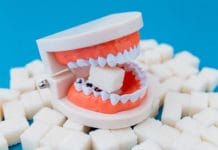The world has been using digital products for so long that no one can remember the old analog days. On the other hand, those needing dental help remember the analog days, because they’re still with us. Making a plaster mold of the mouth, sending off for crowns, bridges, partial plates and dentures are still analog procedures. It seems the medical industry is the last to pick up on technology that produces faster, more quality results.
The future is here, though, in the form of 3D printing and digital smile design. It isn’t simply a line in the current dental news/trends magazines; it’s reality for many practices. 3D printing has come a long way, even making it into dental offices far and wide. Patients are now walking out of dental offices with new crowns, bridges or plates in under an hour in addition to being pain-free. But what’s it all about?
What is Digital Smile Design?
Picture software snaps a picture of a patient’s smile. Now imagine intraoral pictures of the actual teeth. Next, picture software that allows the practitioner and his or her patient to go through pictures of smiles until the ideal one is chosen. When the choice is made, the dentist will make a mold of the patient’s teeth. The patient will try it on to see if adjustments are necessary. Now the final product, so to speak, goes either to the lab or into the 3D printer for manifestation into a beautiful smile.
How Does It Work?
The above explanation is a bit simplistic, but consider that most technicians and dentists are digitally trained in school. Today’s products are designed for use in real time. DSD and 3D printing are keeping up with the industry’s digital training.
The digital image taken of the teeth by the intraoral scanner is then put into the software. This is where the doctor and patient search for the perfect smile. Now that the digital model is in the software, the 3D printer will print out a working model, or prototype, for the new teeth. This is placed in a silicone index, making a negative of the teeth. This is covered with acrylic and placed in the patient’s mouth.
Now the doctor and patient may take the prototype, of which pictures have been made, and search the software for a better smile. Some dentists have the capability of 3D printing the new teeth right in the office. Other doctors send theirs off to labs to be fabricated. Either way, patients have the smile they’ve always wanted, in minutes or days.
What’s In the Future For Teeth?
Architects, engineers of every ilk, as well as builders of every type use CAD-CAM (computer aided design-computer aided manufacture) technology to make prototypes or working models. Add digital scanners and 3D printers to the mix, and dentists will have happy patients in less time than it takes to smile at them. Moving completely into the digital world gives dentists the chance to fulfill their patients’ needs without all those bulky models.
Imagine the capability of producing dental appliances in real time, digitally designed and correctly fitting in minutes. Patients will no longer dread visits to the dentist. In fact, it will be very nearly painless. Customization is important in any industry; it’s easy to see how it could be more so in the dental industry.
A technician can take care of the fabrication, while the doctor is seeing patients. Production time will decrease, while product output will increase. Since the technology advances daily, practitioners can even produce finished products due to the advancement of the materials used in fabrication.











